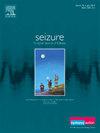预测癫痫持续状态后癫痫复发:一种多中心探索性机器学习方法
IF 2.8
3区 医学
Q2 CLINICAL NEUROLOGY
引用次数: 0
摘要
目的缺乏预测癫痫持续状态(SE)后癫痫复发的工具。在这项多中心队列研究中,我们探索了不同机器学习(ML)模型在无癫痫发作史(de novo SE, dnSE)患者首次发作SE后预测癫痫复发的能力。方法回顾性分析2011 - 2021年在西班牙巴塞罗那瓦尔德希伯伦大学医院和2013 - 2022年在意大利巴吉瓦拉摩德纳学术医院住院的年龄≥16岁无癫痫发作史的连续SE患者。不同的机器学习技术(k-Nearest Neighbors, Naïve贝叶斯,人工神经网络,支持向量机,决策树,随机森林)以及经典的逻辑回归模型基于临床和神经生理变量建立并应用于癫痫发作复发的预测模型。总样本的70%被随机选择来训练模型;剩余的30%用于验证。计算具有95%置信区间(95% CI)的受试者工作特征曲线(AUROC)下面积,以评估其预测能力。结果共纳入386例患者,其中136例(35.2%)SE发作后2年内癫痫复发。与两年癫痫复发显著相关的因素包括进行性症状性SE病因学(p <;0.001)、昏迷的非惊厥性SE (p = 0.021)和院外SE (p = 0.033)。急性症状性SE病因导致保护因素(p <;0.001)。在ML技术中,除人工神经网络外,所有ML技术在预测两年癫痫复发方面都略优于逻辑回归模型。随机森林算法(AUROC 0.687, 95% CI = 0.580 ~ 0.793)在验证数据集中表现出最好的预测能力,显著优于logistic回归模型(AUROC 0.594, 95% CI = 0.478 ~ 0.710)。结论在我们的研究中,随机森林算法对成年患者dnSE后两年癫痫复发的预测能力最好。需要进一步的研究和更多的数据来提高其预测性能。这项多中心国际回顾性研究发现,超过三分之一(35.2%)无癫痫病史的癫痫持续状态患者在发病后两年内再次发作。通过提供临床和人口统计学变量,构建机器学习算法,并将其预测癫痫复发的能力与经典统计模型进行比较。这是第一个表明人工智能——特别是随机森林算法——在预测这些患者的癫痫复发方面可以优于传统的统计方法的研究。然而,他们的表现仍然不令人满意,需要进一步的研究和额外的数据来提高预测的准确性。本文章由计算机程序翻译,如有差异,请以英文原文为准。
Predicting seizure recurrence after status epilepticus: a multicenter exploratory machine learning approach
Purpose
Tools to predict seizure recurrence after status epilepticus (SE) are lacking. In this multicenter cohort study, we explored the ability of different machine learning (ML) models to predict seizure recurrence following a first episode of SE in patients without a prior history of seizures (de novo SE, dnSE).
Methods
Consecutive SE patients aged ≥16 years without a previous history of seizures admitted to Vall d’Hebron University Hospital (Barcelona, Spain) from 2011 to 2021 and Modena Academic Hospital (Baggiovara, Italy) from 2013 to 2022 were reviewed. Different machine learning techniques (k-Nearest Neighbors, Naïve Bayes, Artificial Neural Network, Support Vector Machines, Decision Tree, Random Forest) as well as the classic logistic regression model were built using clinical and neurophysiological variables and applied to develop predictive models of seizure recurrence. Seventy percent of the total sample was randomly selected to train the models; the remaining 30 % was used for validation. The area under the receiver operating characteristic curves (AUROC) with a 95 % confidence interval (95 % CI) was calculated to assess their predictive capability.
Results
A total of 386 patients were included, of which 136 (35.2 %) had seizure recurrence within 2 years after the SE episode. Factors significantly associated with two-year seizure recurrence included progressive symptomatic SE etiology (p < 0.001), non-convulsive SE with coma (p = 0.021), and out-of-hospital SE (p = 0.033). Acute symptomatic SE etiology resulted a protective factor (p < 0.001). Among ML techniques, all were slightly superior to the logistic regression model in predicting two-year seizure recurrence, except for Artificial Neural Network. The Random Forest algorithm (AUROC 0.687, 95 %CI = 0.580 - 0.793) demonstrated the best predictive capability in the validation dataset, significantly outperforming the logistic regression model (AUROC 0.594, 95 %CI = 0.478 - 0.710).
Conclusions
In our study, the Random Forest algorithm showed the best predictive capability for two-year seizure recurrence after a dnSE in adult patients. Further studies and additional data are needed to improve its predictive performance.
Plain language summary
This multicenter international retrospective study found that over one-third (35.2 %) of patients who develop status epilepticus without a prior history of epilepsy will have a new seizure within two years after the event. By providing clinical and demographic variables, machine learning algorithms were built and their ability to predict seizure recurrence compared with that of classical statistical model. This is the first study to show that artificial intelligence - specifically, Random Forest algorithm - can outperform traditional statistical methods in predicting seizure recurrence in these patients. However, their performance remains unsatisfactory, requiring further research and additional data to improve predictive accuracy.
求助全文
通过发布文献求助,成功后即可免费获取论文全文。
去求助
来源期刊

Seizure-European Journal of Epilepsy
医学-临床神经学
CiteScore
5.60
自引率
6.70%
发文量
231
审稿时长
34 days
期刊介绍:
Seizure - European Journal of Epilepsy is an international journal owned by Epilepsy Action (the largest member led epilepsy organisation in the UK). It provides a forum for papers on all topics related to epilepsy and seizure disorders.
 求助内容:
求助内容: 应助结果提醒方式:
应助结果提醒方式:


